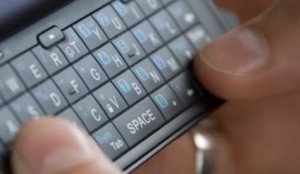Whether it is real or perceived, the digital divide is often used as an excuse for non-adoption of mobile health. What is the “digital divide” exactly? The term is meant to describe the differences between people, households, or demographic/socioeconomic groups with regards to access to information technology and the knowledge and skills needed to use the information gained through technology. Factors such as gender, age, ethnicity, income, and educational attainment are often used when describing the digital divide in the United States. It isn’t uncommon for me to hear, “…but I don’t think our patients actually use mobile phones.”
Who is using mobile technology?
In fact, there is 91% US adult adoption of mobile technology, which can be compared to 85% adoption a year ago. Does that mean that 91% of the population has access to  mobile apps? Not exactly. There is a comparative 56% adoption of smart phones. Even still, not having access to mobile apps does not close the door to the use of mobile to impact population health in a major way.
mobile apps? Not exactly. There is a comparative 56% adoption of smart phones. Even still, not having access to mobile apps does not close the door to the use of mobile to impact population health in a major way.
There are great ways to reach that entire 91% through the use of text messaging as a mobile health tool. Here are some examples:
Text4baby
Text4baby is a free mobile health service provided by National Healthy Mothers, Healthy Babies Coalition that is aimed at promoting pre-natal and child health through text messaging. Women who text BABY (BEBE en Espanol) to 511411 receive three free text messages per week. These text messages are timed to either due date or a baby’s birth date and continue through pregnancy and up until the baby’s first birthday. The messages address topics like labor signs, prenatal care, developmental milestones, immunizations, nutrition, birth defect prevention, safe sleep, and more. Text4baby has reached over half a million moms since its launch in 2010.
myAgileLife
The emergency department at Los Angeles County Hospital of University of Southern California studied 128 Type 2 diabetes patients to assess the impact of mobile health on a population whose primary source of care is the ER. These patients, who have long been noted as a significant drain on the healthcare system, were enrolled in TExt-MED (now called myAgileLife) while a similar control group received normal care. The representative sample was 70% Latino and 14% black in order to accurately sample the population in question. The experimental group received non-interactive text messages two times a day for six months. The study showed a statistically significant impact on increased medication compliance and decreased emergency room visits. However, there was not a statistically significant impact on HbA1c hemoglobin levels. Those results were slightly better for the experimental group, but they still fell within the margin of error. The results of the study also showed that text intervention was more effective for Spanish speakers than English speakers.
Duke Obesity Prevention Program
Duke University conducted a randomized control pilot study to calculate the impact of daily text messages on weight control among racial and ethnic minority women. This program enabled daily self-monitoring of diet and physical activities to evaluate the feasibility of text message prevention for weight loss among predominantly black women. Fifty obese women were either a part of a 6-month intervention using a fully automated system that included text messages and brief feedback and tips or they were part of an education only control group. Weight was measured for six months. Nearly 70% of study participants strongly agreed that daily texting was both helpful and easy. 76% felt the frequency of texts was appropriate. At the end of 6 months, the experimental group lost more weight than the control group. They also found that greater text message program adherence was associated with a higher percentage of weight loss.
This is where healthcare providers must think like advertisers. If you wish to change or cause a behavior, then your message and calls to action need to be in those places where your consumers are. Patients only spend 1% of their time in the clinical care setting. In person outreach is not enough. However, for 91% of the population, mobile technology is in hand a large portion of every day. Given the increasing use of mobile devices, text messaging may be one of the most useful tools for the management of weight control, diabetes, pre-natal care and many other conditions that impact population health
